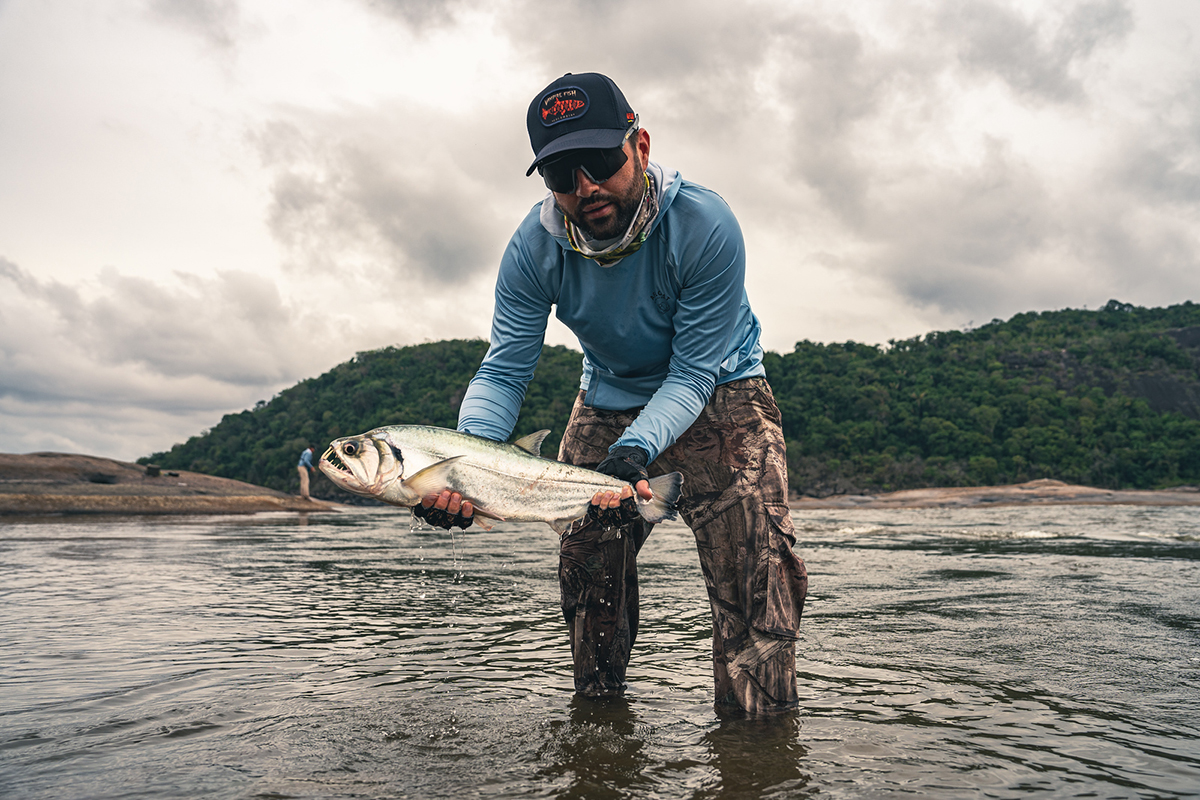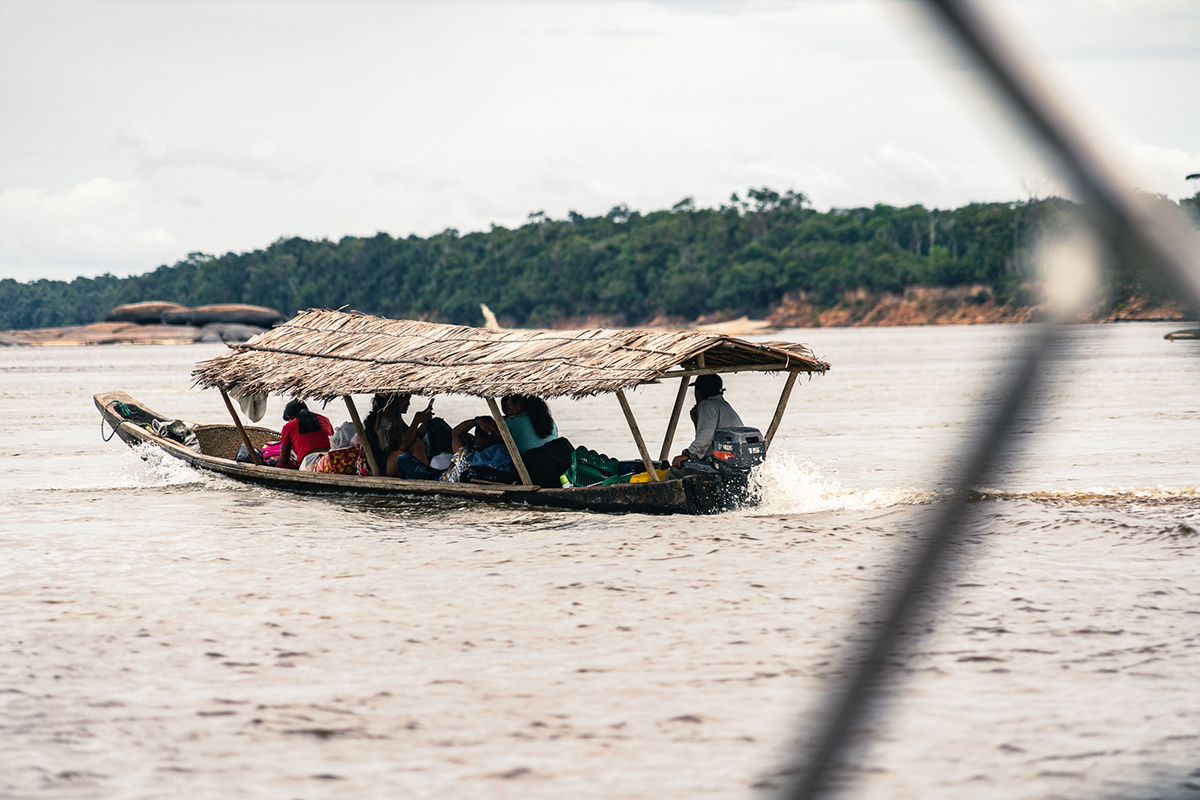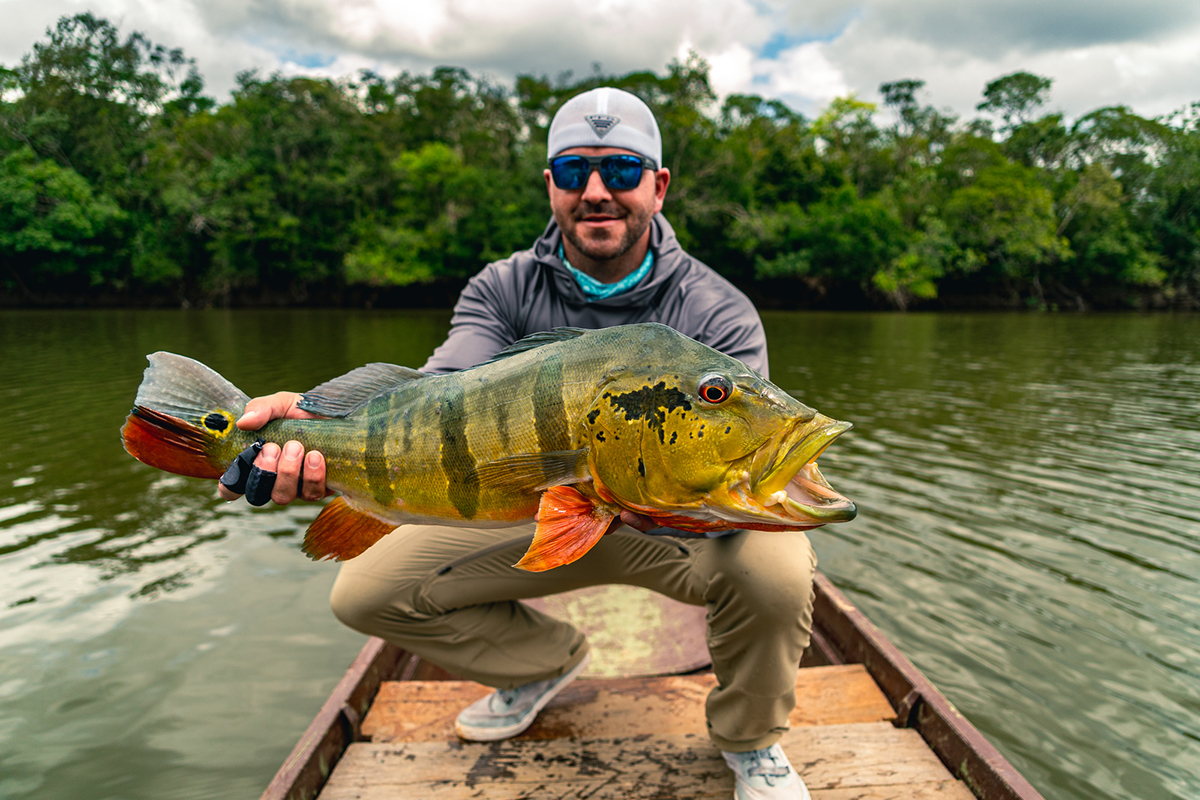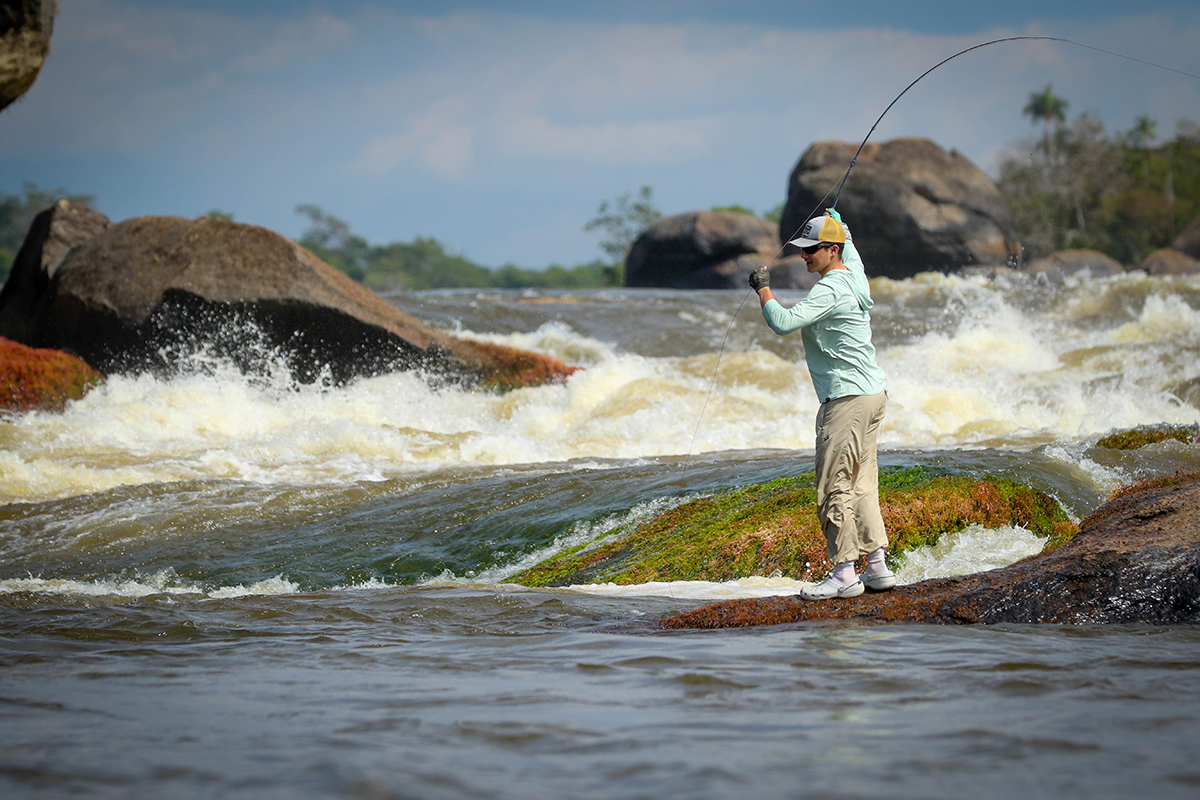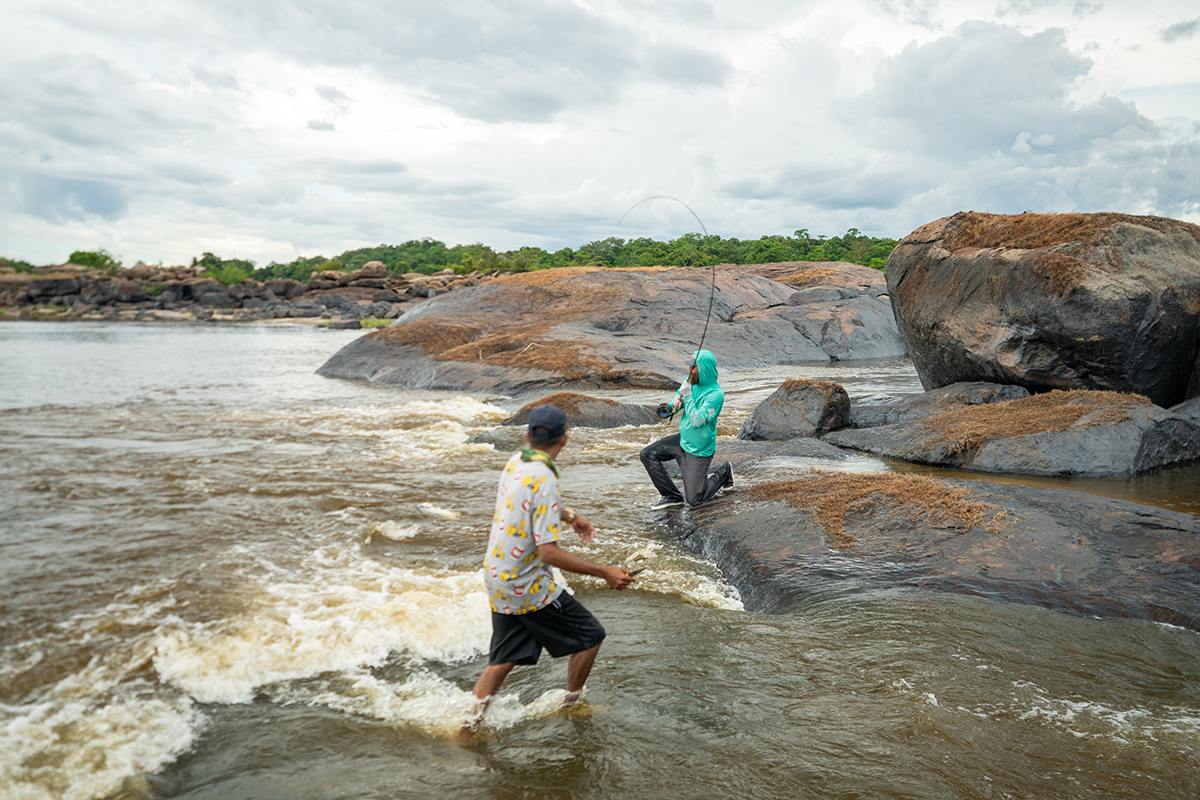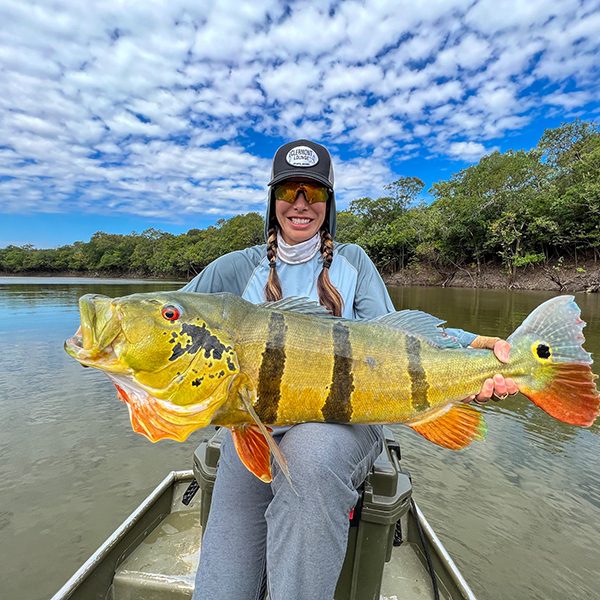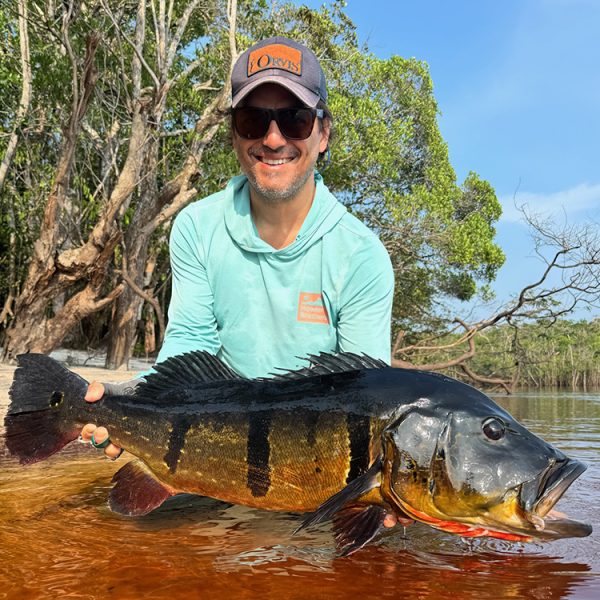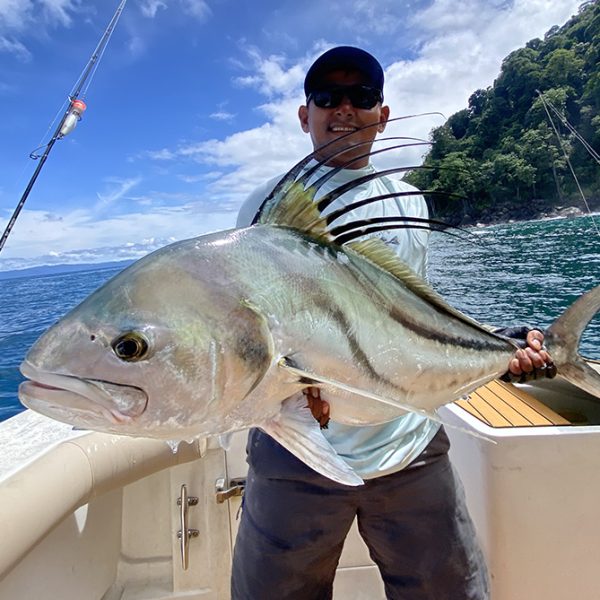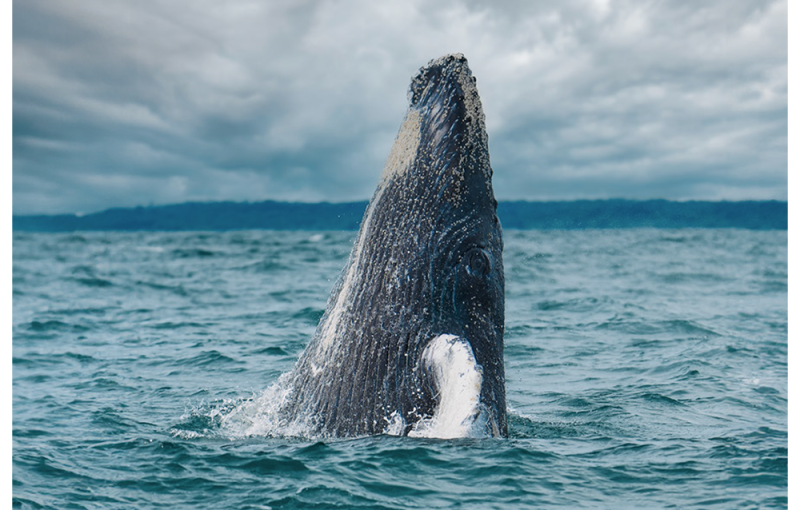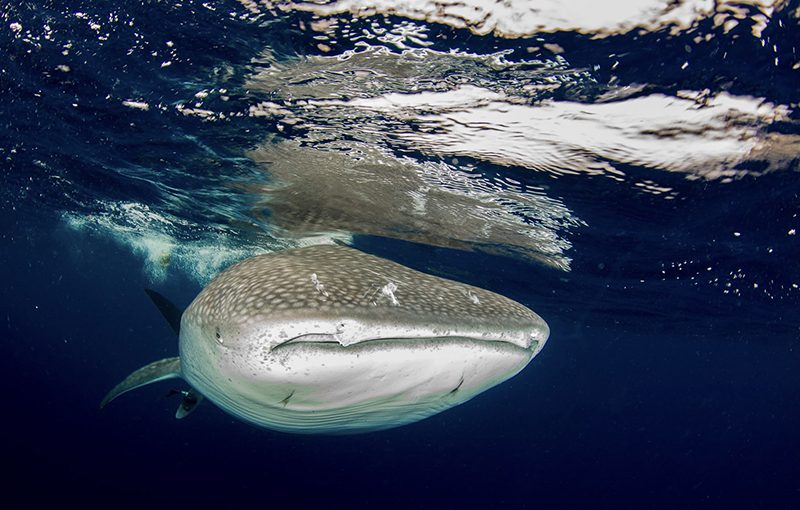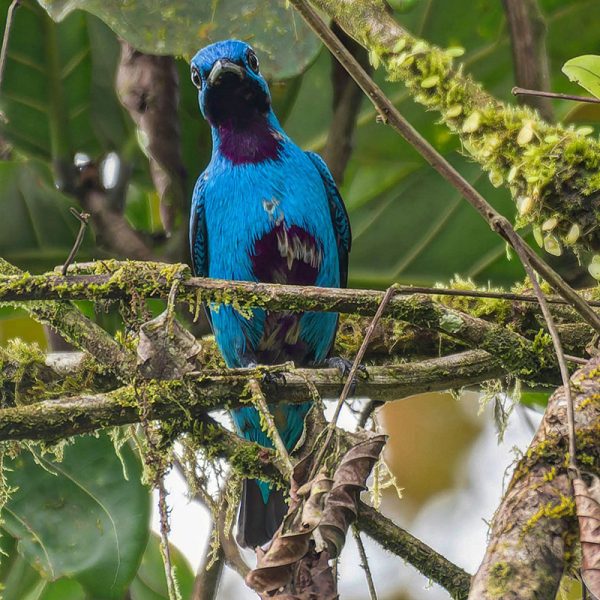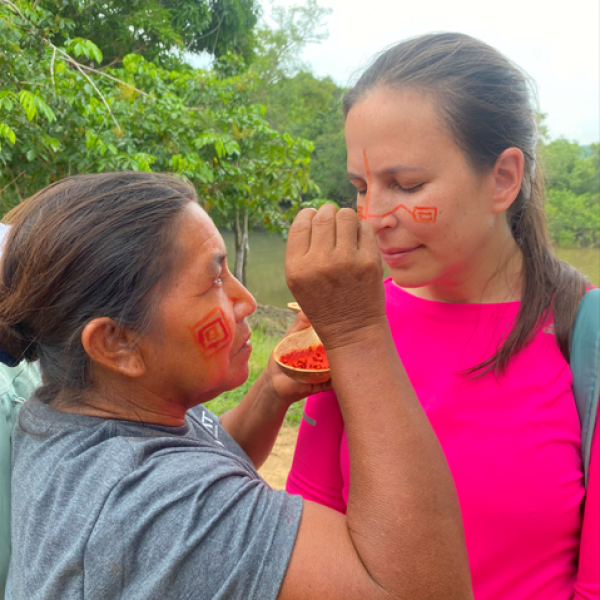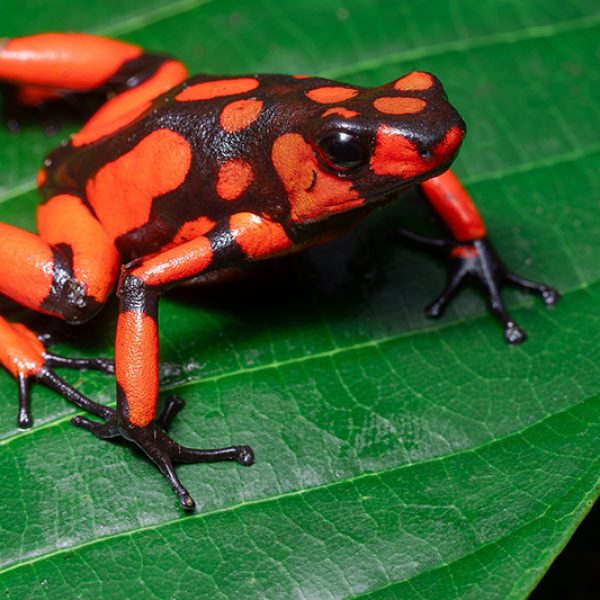AKUANI
RIVER LODGE
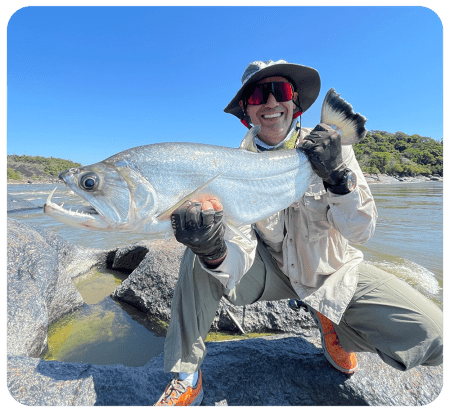
UNLEASH THE
ULTIMATE FISHING
ADVENTURE:
Venture deep into Colombia’s pristine wilderness for an unrivaled fishing experience at Akuani River Lodge.
Nestled in the heart of the untamed jungle, this exclusive destination offers the thrill of battling trophy Peacock Bass and the fierce Vampire Fish.
With access to two distinct ecosystems, every cast promises an unforgettable encounter in some of South America’s most biodiverse and unspoiled waters.
Season:
- November to March
TRIP INFORMATION
Discover the Diverse Ecosystems of Colombia’s Jungle
Immerse yourself in a distinctive fishing adventure at Akuani River Lodge. During your trip, you’ll have the opportunity to fish in two diverse environments. For Peacock Bass enthusiasts, our expeditions take place along the Vichada River and its serene lagoons. Utilizing specialized bongos (boats) designed for fly and spinning techniques, each day brings new fishing spots and thrilling opportunities.
Experience the Power of the Orinoco River
Venture into the heart of the Orinoco River for an adrenaline-pumping encounter with Payara at the Maipures rapids. Amidst imposing rocks and powerful rapids, our excursions start with an exhilarating speedboat ride, followed by intense fishing sessions targeting Vampire Fish, Sardinata, and Pacu from rocky outcrops. As night falls, unwind in comfortable tents beneath the jungle canopy, concluding your adventure with a full day of fishing before returning to the lodge.
Trip Itinerary:
Upon arrival at El Dorado International Airport, our Afloat representative will greet you and provide transportation to the nearby Aloft hotel. Enjoy included double accommodation at the hotel, with single rooms available for an additional US$90, payable at the hotel counter.
Begin your adventure with a transfer from the hotel to Terminal 2 for a domestic flight to Puerto Inírida (approximately 1.5 hours). Upon arrival at Puerto Inírida Airport, another Afloat representative will escort you to the river where a speedboat awaits for a scenic journey to the lodge (anticipated 4-hour boat ride). Lunch will be served onboard. Arrive at the lodge to a warm welcome with drinks and snacks.
Explore the Vichada River and its tranquil lagoons aboard specialized boats, perfect for fly and spinning techniques. Each day offers new fishing spots and thrilling opportunities.
Journey to the Maipures rapids on the Orinoco River for an adrenaline-pumping fishing experience amidst imposing rocks and fast currents. Fish for Payara, Vampire Fish, Sardinata, and Pacu from rocky outcrops.
Return to the Vichada River for more Peacock Bass fishing, enjoying the serene beauty and abundant wildlife of the Colombian wilderness.
Depart the lodge for Puerto Inírida and take a flight back to Bogotá. An Afloat representative will assist with transfers to the airport and hotel, ensuring a seamless journey. Double accommodation is included, with single rooms available for an additional US$90, payable at the hotel.
Depending on your international flight schedule, our representative will transfer you from the hotel to El Dorado International Airport for your departure.

Trip Itinerary:
- Includes:
-
- Airport shuttles
- 2 hotel nights in Bogotá (double accommodation)
- Domestic flight to Puerto Inírida
- Lodge and river transfers
- 3 meals a day
- Unlimited soft drinks and beer
- Snacks
- Travel insurance.
- Equipment and Services:
-
- Boats: For peacock and payara fishing, you'll use Bongos, large and comfortable canoes equipped with chairs, casting platforms, and coolers stocked with beer, soft drinks, and water. Each boat accommodates two anglers and a guide.
- Guides: For peacock bass fishing, you'll have the same 2 guides for four days. For payara fishing on the Orinoco River, you’ll be accompanied by different guides. Although the guides are not fluent in English, they can communicate essential information. Additionally, an English-speaking host will be available to assist with all your needs.
- Power: The cabins and dining area at Akuani River Lodge have 110V electricity, the same as in the US.
- Fishing Gear: Fishing gear is not provided. Single hooks are required for all lures and flies when targeting peacock bass and payara. Lures and flies are available for purchase at the Lodge. A comprehensive tackle and gear list is included in our confirmation packet.
- Communications: There is no cellular service at the lodge, but Starlink is available for internet connectivity.
- Excludes:
-
- Flight to Bogotá, Colombia
- Excess luggage fees at El Dorado International Airport
- Meals in Bogotá or at places other than the camp
- Extra activities in Bogotá
- Fishing gear
- Hard liquor (please notify us in advance if you would like them provided at the camp, with the corresponding invoice)
- Tips (we suggest leaving a tip of 10 to 15% of the total package price)
- Global Rescue service (highly recommended).
Immerse Yourself in Sikuani Culture
At Akuani River Lodge, nestled in the Mataven jungle, you’ll immerse yourself in the Sikuani culture. Handmade items like bows and arrows are available for purchase.
Spectacular Views and Comfortable Accommodations
The lodge sits atop a cliff, offering stunning views of the Vichada River. It features four spacious cabins, each with two queen beds, private baths, electrical outlets, and ceiling fans
Rustic Charm at the Payara Camp
The payara camp provides a more rustic experience with double-occupancy tents and cots. This camp serves as the starting point for an exciting expedition to the Maipures Rapids, set in an otherworldly landscape.
Travel Tips for Bogotá
In Bogotá, you can use Uber for transportation, and credit cards are widely accepted at restaurants in the city. However, we recommend exchanging some Colombian pesos for your expenses in the remote locations we will visit. Upon booking with us, we will inform you if a COVID test is required to enter the country. You must fill out this form 24 hours before entering Colombia and also when leaving:
[Migración Colombia Pre-Registration](https://apps.migracioncolombia.gov.co/pre-registro/public/preregistro.jsf)
Wildlife in the Vichada and Orinoco rivers, Vichada, Colombia
Explore the rich biodiversity of the Vichada and Orinoco Rivers. Some of the species you might encounter include:
Fish Species:
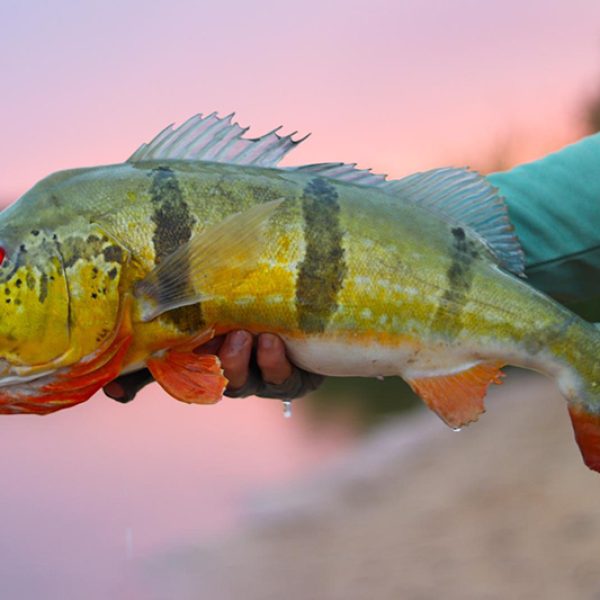
SPECKLED PEACOCK BASS
Cichla temensis
The largest cichlid in the world, native to the Amazon and Orinoco basins. Known for its aggressive nature and striking looks, it can grow up to 100 cm and 30 pounds. Anglers prize this fish for its impressive size and challenging fight.
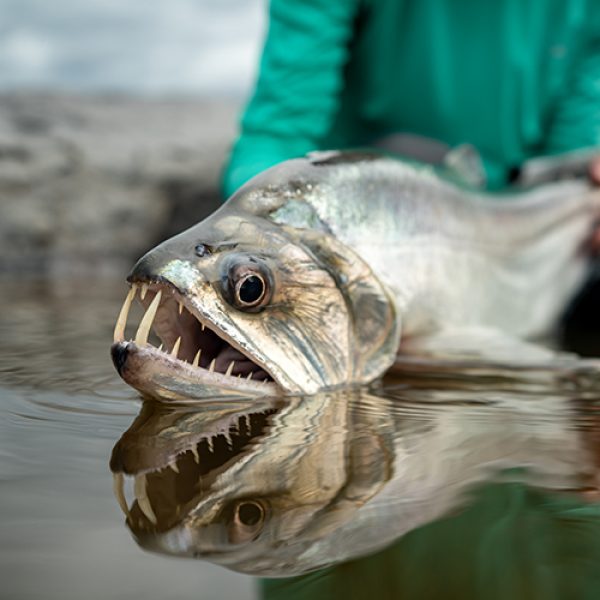
PAYARA (VAMPIRE FISH)
Hydrolycus armatus
Payara, also known as the Vampire Fish, is a predatory freshwater species native to South American rivers like the Amazon and Orinoco basins. It is characterized by its elongated body, silver coloration, and large, prominent fangs used for catching prey. Payara are apex predators, reaching lengths over 1 meter and weights exceeding 30 pounds. They inhabit fast-flowing waters near rocky areas, where they hunt smaller fish with aggressive and precise strikes.
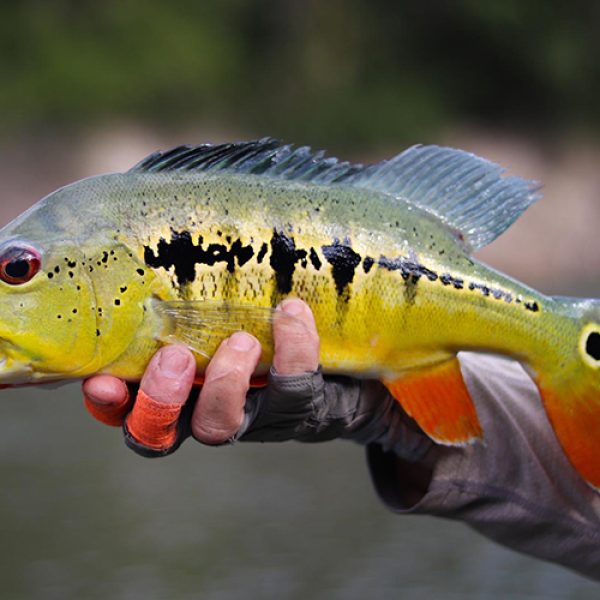
INTERMEDIA PEACOCK BASS
Cichla intermedia
Carnivorous fish found in various South American river systems, including the Amazon and Orinoco basins. It reaches sizes of 30-50 cm and is prized by anglers for its aggressive nature, vibrant coloration, and strong fighting ability. This species prefers habitats with moderate current and vegetation, making it a sought-after game fish for sport fishing enthusiasts.
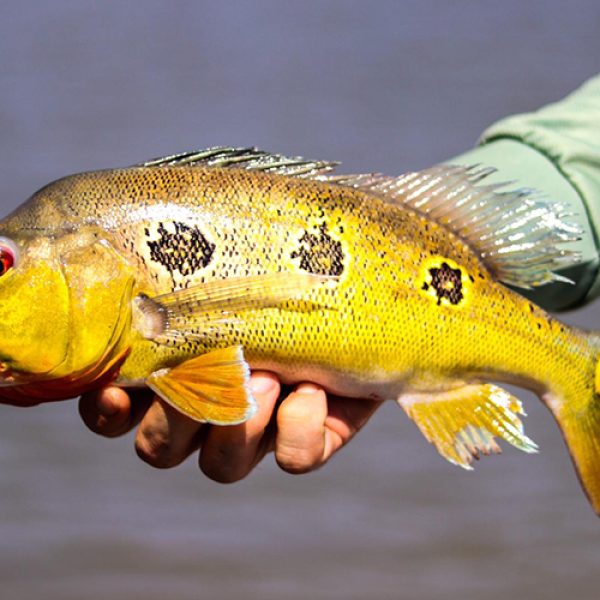
ORINOCO PEACOCK BASS
Cichla orinocensis
Commonly known as the Orinoco Peacock Bass, is a carnivorous cichlid found in the Orinoco River basin of South America. It reaches sizes of 30-60 cm and is prized by anglers for its aggressive nature, vibrant coloration, and strong fighting ability. This species inhabits slow-moving waters with vegetation and is a sought-after game fish for sport fishing enthusiasts.
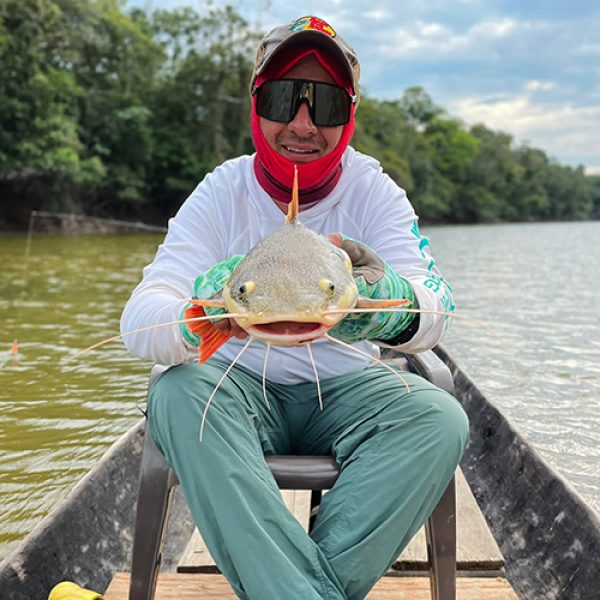
RED TAIL CATFISH
Phractocephalus hemioliopterus
Large freshwater species native to South American rivers like the Amazon and Orinoco basins. It is known for its impressive size, reaching over 1.5 meters in length and weights exceeding 170 pounds. Recognizable by its broad head and distinctive red-orange tail fin, this catfish inhabits slow-moving waters with muddy or sandy bottoms. Red Tail Catfish are omnivorous, consuming fish, crustaceans, and plant matter.
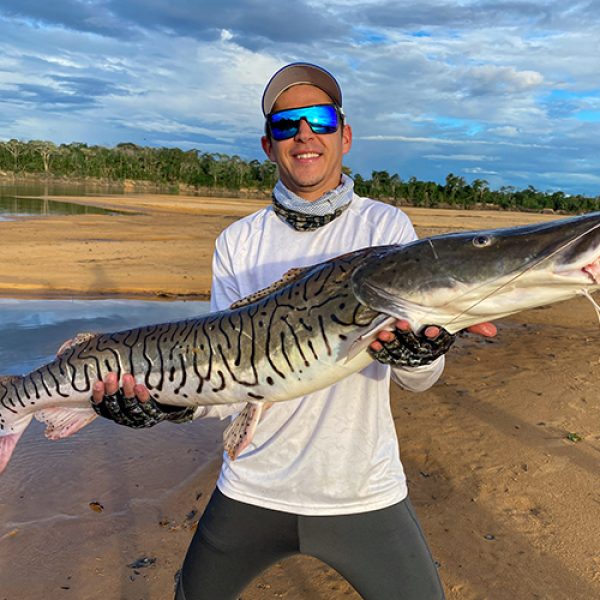
SHOVEL NOSE CATFISH
Pseudoplatystoma fasciatum
Large freshwater species native to South American rivers like the Amazon and Orinoco basins. Known for its distinctive shovel-shaped snout, it can reach lengths of 1-1.5 meters and weigh up to 65 pounds. These catfish prefer habitats with fast-flowing currents and rocky bottoms, where they hunt fish, crustaceans, and other prey. Highly prized by sport fishermen for their size and powerful fights.
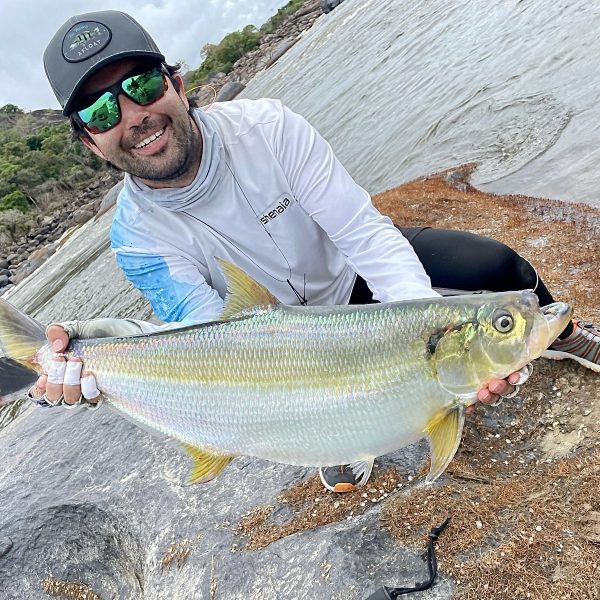
AMAZON PELLONA
Pellona castelnaeana
Is a slender freshwater fish native to South American river systems, especially in the Amazon Basin. It grows up to 45 cm in length and is known for its silvery coloration and schooling behavior. Amazon Pellona primarily feeds on small fish and aquatic insects, making it a popular target for sport fishermen due to its spirited fights and acrobatic leaps.
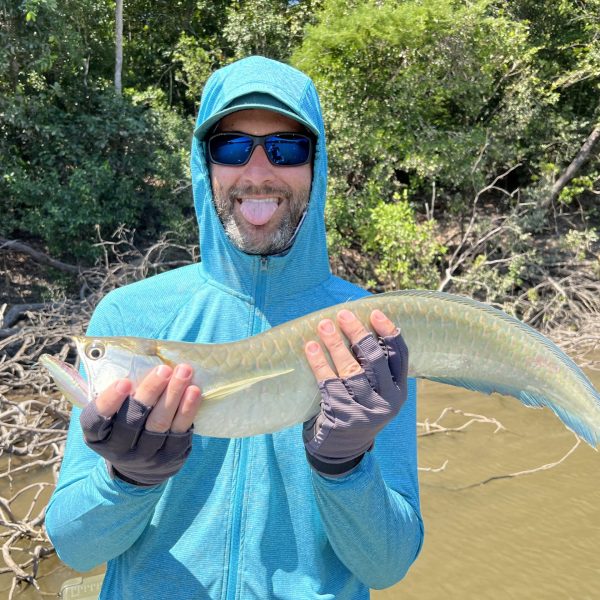
AROWANA
Osteoglossum bicirrhosum
Freshwater fish known for their elongated bodies, large scales, and vibrant metallic colors like silver and gold. They inhabit tropical regions of South America, Africa, Asia, and Australia, preferring slow-moving rivers and lakes with dense vegetation. Arowanas are prized in the aquarium trade for their striking appearance and jumping ability.
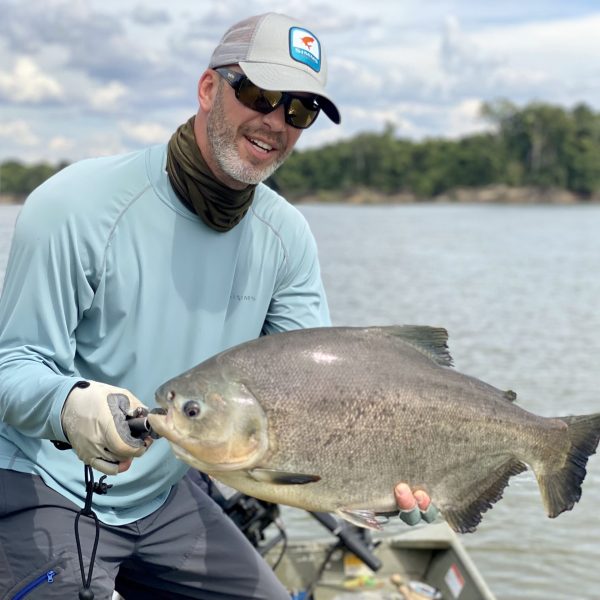
BLACK PACU
Colossoma macropomum
This large freshwater fish is recognized for its robust build, black coloration, and preference for habitats with abundant vegetation and submerged structures. Black Pacu are prized by sport fishermen for their size and strength, feeding primarily on fruits, seeds, nuts, and aquatic plants. Conservation efforts are crucial to sustain their populations due to their ecological importance and vulnerability to habitat degradation.
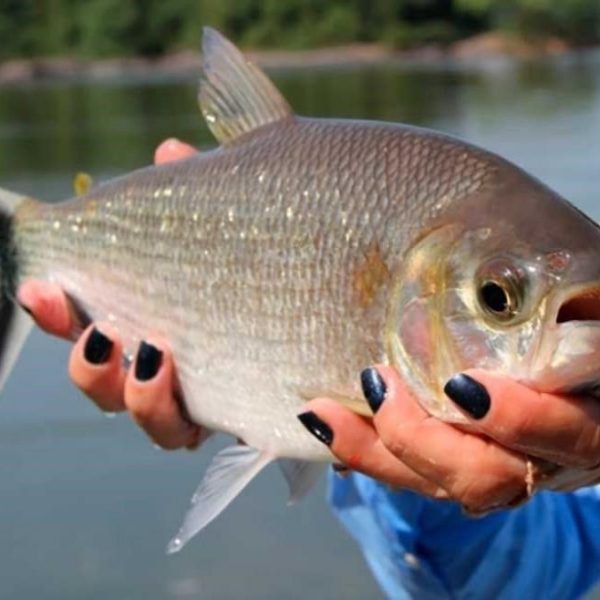
MATRINXA
Brycon amazonicus
Medium-sized freshwater fish native to South American rivers, particularly in the Amazon Basin. It has a streamlined body with silvery scales and grows up to 60 cm (24 inches) in length. Matrinxa prefers clear, moderately flowing waters with sandy or rocky bottoms and feeds on small fish, insects, and plant matter. It is prized by sport fishermen for its acrobatic leaps and spirited fights.
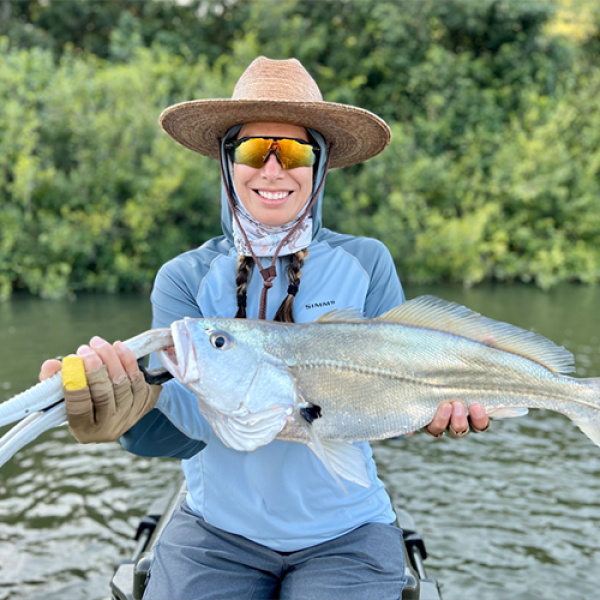
SILVER CROAKER
Plagioscion squamosissimus
Freshwater fish found in South American river systems, including the Amazon and Orinoco basins. It has a slender, silver-scaled body that can grow up to 60 cm (24 inches) in length. Silver Croaker inhabits rivers, floodplain lakes, and reservoirs with muddy or sandy bottoms. It is omnivorous, feeding on small fish, crustaceans, insects, and plants. Valued for its taste, it is targeted by both commercial and sport fishermen.
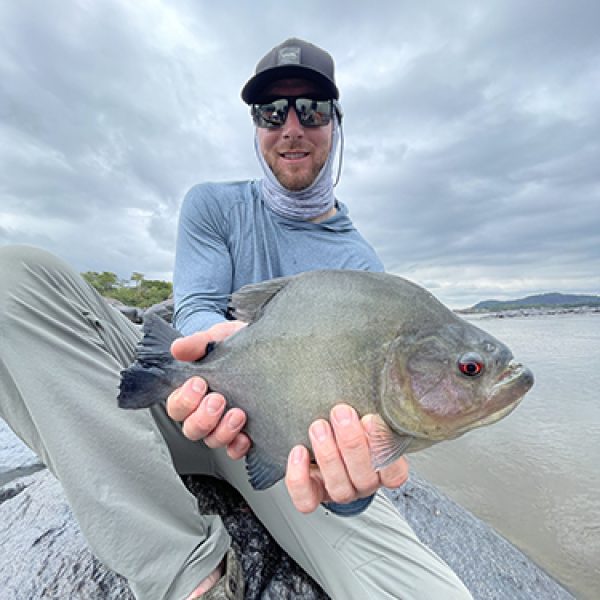
PIRANHA
Pygocentrus cariba
Is a carnivorous freshwater fish native to South American rivers, particularly in the Amazon Basin and Orinoco River systems. Known for their robust bodies, silvery coloration, and sharp, triangular teeth, Piranhas grow up to 30 cm (12 inches) in length. They inhabit slow-moving rivers and lakes with dense vegetation, where they feed on fish, crustaceans, and occasionally small mammals or birds.
Wildlife
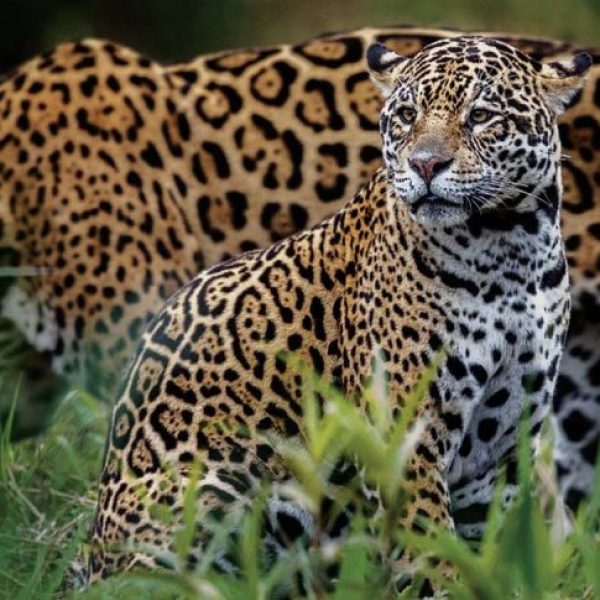
JAGUAR
Panthera onca
The jaguar is the largest cat in the Americas and a powerful apex predator. It has a robust build with a yellowish-brown coat marked by black rosettes and spots. Jaguars primarily inhabit tropical rainforests, including the Orinoquia region, where they hunt a variety of prey, such as deer, capybaras, and tapirs. They are solitary animals, known for their stealth and strength.
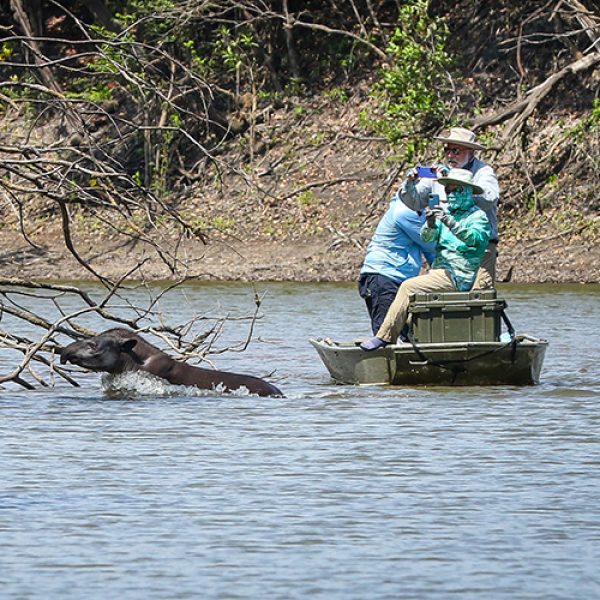
TAPIR
Tapirus terrestris
The South American tapir, also known as the Brazilian tapir, is a large, herbivorous mammal with a prehensile snout. It has a dark brown coat and can weigh up to 250 kg. Tapirs inhabit the forests and grasslands of the Orinoquia region. They are primarily nocturnal and feed on leaves, fruits, and aquatic plants. Tapirs play a crucial role in seed dispersal, aiding forest regeneration.
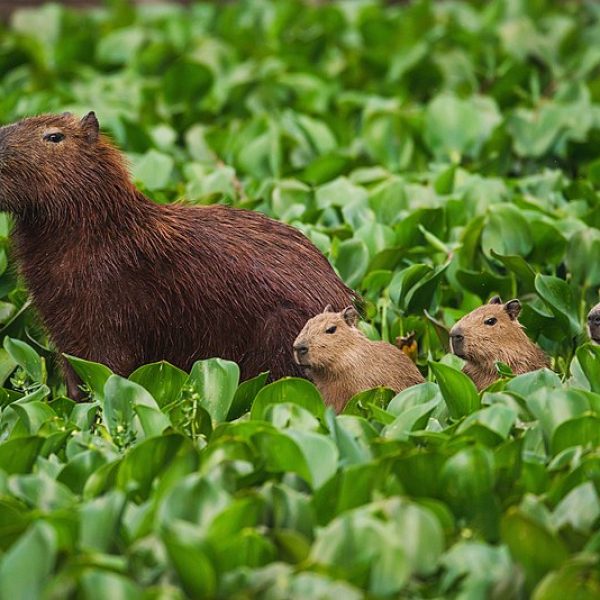
CAPYBARA
Hydrochoerus hydrochaeris
Capybaras are the largest rodents in the world, easily recognizable by their large, barrel-shaped bodies and webbed feet. They are social animals, often found in groups near water sources. Capybaras are herbivores, feeding on grasses and aquatic plants. They inhabit various wetland environments, including those in the Orinoquia region, and are an essential part of the ecosystem.
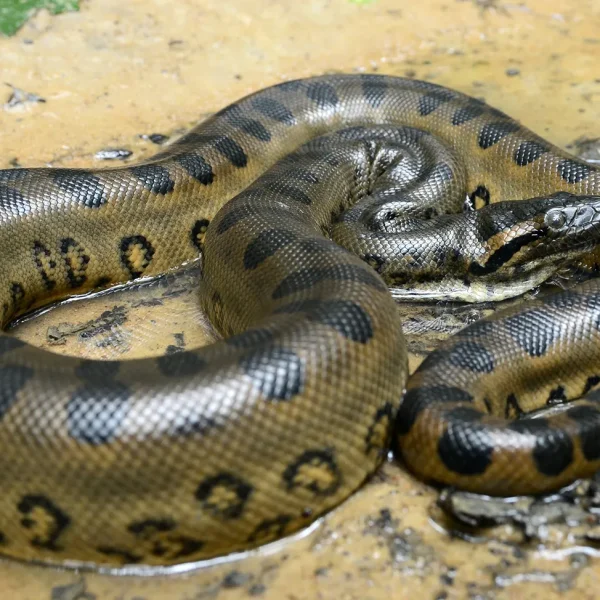
GREEN ANACONDA
Eunectes murinus
The green anaconda is one of the largest snakes in the world, capable of growing over 9 meters in length. It has a thick, muscular body with olive-green coloration and black oval patches. Anacondas are primarily aquatic and inhabit swamps, marshes, and slow-moving streams in the Orinoquia region. They are ambush predators, preying on a variety of animals, including fish, birds, and mammals.
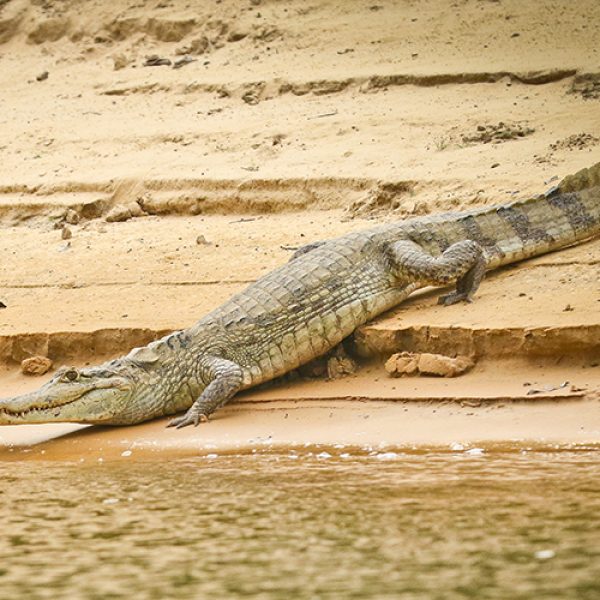
ORINOCO CAIMAN
Caiman crocodilus
The Orinoco caiman, also known as the spectacled caiman, is a medium-sized crocodilian native to the Orinoco River basin. It has a broad, flattened body with rough, scaly skin and a distinctive bony ridge between the eyes. Caimans are opportunistic feeders, preying on fish, birds, and small mammals. They play a vital role in maintaining the balance of aquatic ecosystems.
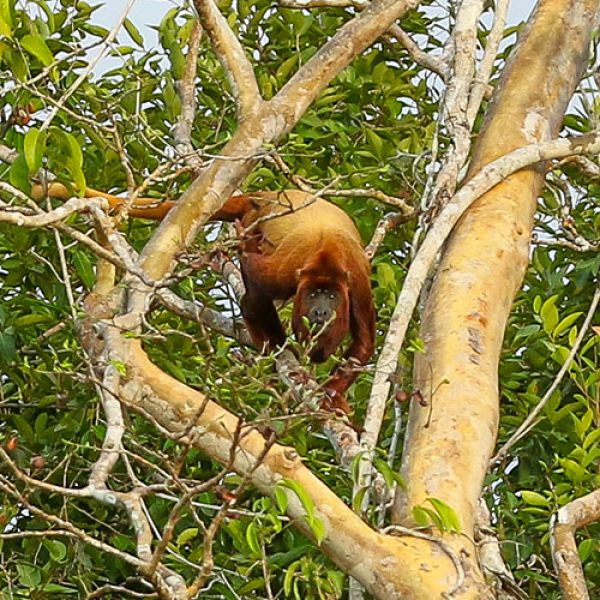
RED HOWLER MONKEY
Alouatta seniculus
Red howler monkeys are known for their deep, resonant calls that can be heard over long distances. They have reddish-brown fur and are arboreal, spending most of their time in the forest canopy. These monkeys are herbivores, feeding on leaves, fruits, and flowers. They are an important part of the Orinoquia forest ecosystem, aiding in seed dispersal and forest health.
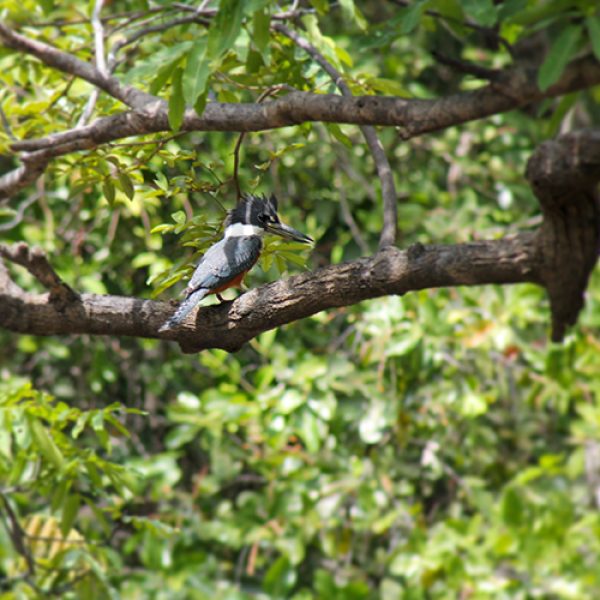
KINGFISHER
Family: Alcedinidae
Kingfishers are small to medium-sized birds with bright plumage and large, pointed bills. They are commonly found near water bodies, where they hunt for fish and aquatic insects. In the Orinoquia region, several species of kingfishers can be observed. They play a crucial role in controlling fish and insect populations, contributing to the health of aquatic ecosystems.
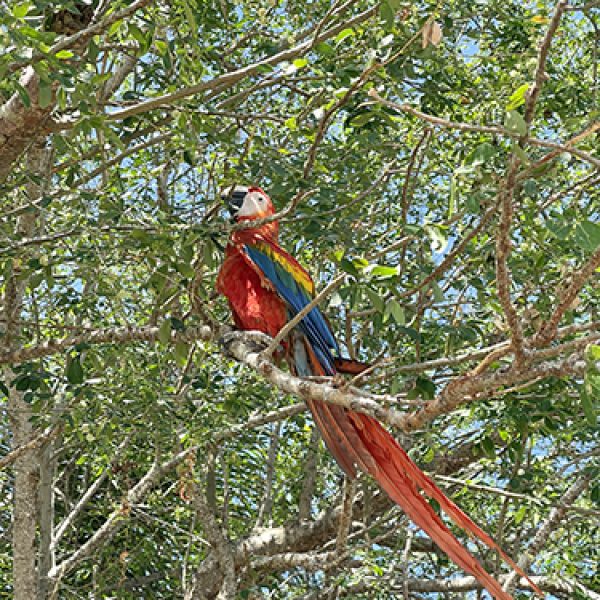
SCARLET MACAW
Ara macao
The scarlet macaw is a large, brightly colored parrot with predominantly red plumage and blue and yellow wings. These birds are highly social and often seen in pairs or flocks. They inhabit tropical rainforests, including those in the Orinoquia region. Scarlet macaws feed on fruits, nuts, and seeds, and their strong beaks allow them to crack open hard shells. They are vital for seed dispersal and forest regeneration.
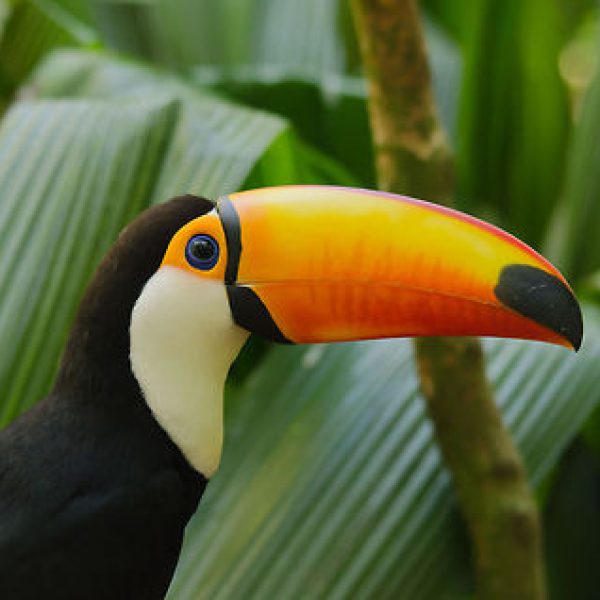
TOUCAN
Family: Ramphastidae
Toucans are easily recognizable by their large, colorful bills and vibrant plumage. These birds are primarily frugivorous, feeding on a variety of fruits, but they also consume insects and small animals. Toucans inhabit the forests of the Orinoquia region, playing a significant role in seed dispersal. Their striking appearance and unique vocalizations make them a favorite among bird watchers and ecotourists.
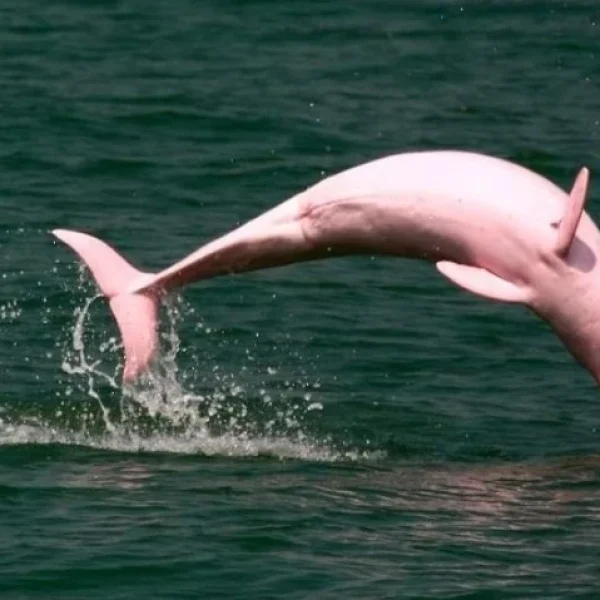
PINK DOLPHIN
Inia geoffrensis
The pink river dolphin, also known as the Amazon river dolphin, is a freshwater cetacean found in the Amazon and Orinoco river basins. It is known for its distinctive pink coloration, which becomes more pronounced as they age. These dolphins have a flexible neck and can turn their heads side-to-side, which helps them navigate through flooded forests and complex river systems. They feed on a variety of fish, crustaceans, and even small turtles.
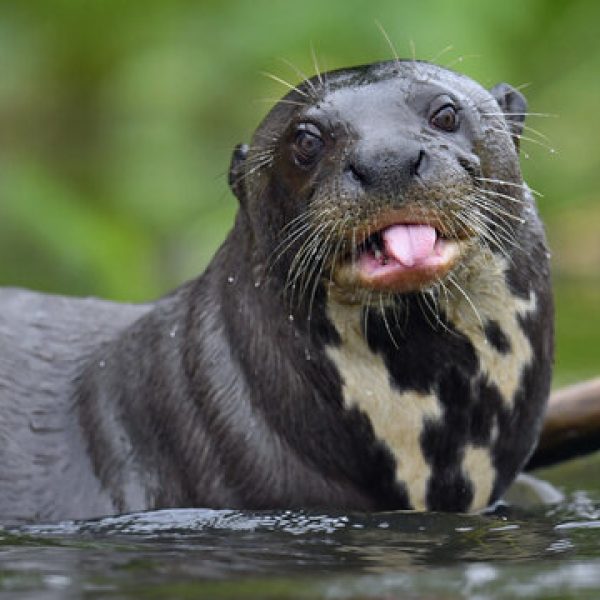
ORINOCO GIANT OTTER
Pteronura brasiliensis
The giant otter is the largest otter species in the world, reaching up to 1.7 meters in length. It has a sleek, brown body with a distinctive white throat patch. Giant otters are social animals, living in family groups and communicating with a range of vocalizations. They inhabit rivers, lakes, and wetlands in the Orinoquia region and are excellent swimmers, preying primarily on fish.
For more information and to view our photo gallery, visit
Live the experience
GALLERY
Fishing & Adventure
EXPERIENCES
Best Peacock bass fishing in South America
Experience the thrill of Peacock Bass fishing in the untouched waters of Colombia, renowned for offering the best fishing adventure in South America.
Wild and Untouched Pasimoni River Adventure
Venture deep into the Venezuelan jungle, the ultimate destination for anglers chasing a world-record peacock bass.
Colombia’s Premier Pristine Saltwater Paradise
Explore Colombia’s unspoiled saltwater waters, perfect for an unforgettable fishing adventure in the most pristine coastal pacific destination.
Other experiences
An Adventure of a Lifetime Where Jungle Meets the Pacific Ocean
Embark on a journey to witness the breathtaking migration of humpback whales, participate in the release of sea turtles, and experience the wonders of eco-tourism.
Snorkel with Whale Sharks in Colombia
Embark on an unforgettable adventure to snorkel alongside the majestic whale sharks.
A Birding Adventure in Colombia
Explore the lush rainforests and vibrant coastal areas of Bahia Solano with our seasoned birding guides, who bring over 15 years of expertise in the region.
An ancient expedition through Guainía and Vichada with Afloat
Embark on a journey to the heart of Eastern Colombia, where the vast Vichada and Orinoco River basin weave a tapestry of breathtaking nature and rich indigenous heritage. Discover the traditions, resilience, and deep connection to the land of the local communities as you immerse yourself in their way of life.


